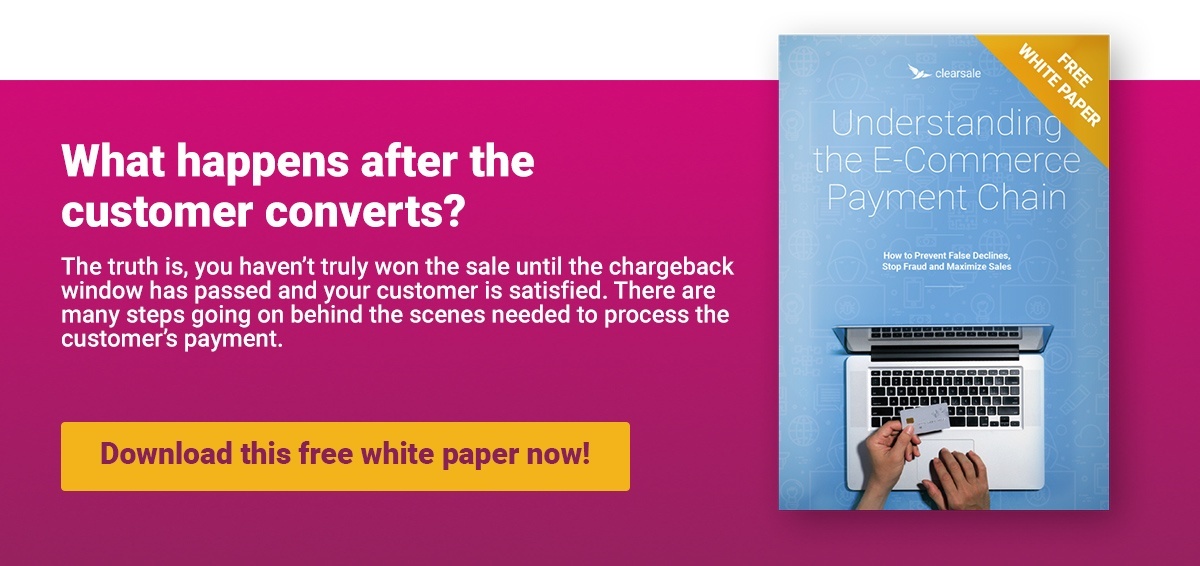5 Ways to Reduce Online Credit Card False Decline Rates
For most of us, when we want to buy a product, we want to buy it NOW. But what happens when you can’t, because your order gets declined?
It’s unsettling and aggravating. And for a merchant, it’s very bad news.
The news gets worse: false declines happen more often that most people think. In fact, about 40% of Americans have had a purchase transaction falsely blocked or questioned, even though the order was legitimate, the card number was valid, and the transaction should have been processed.
Why are so many legitimate transactions being flagged or declined?
Recent security breaches and increased sophistication among fraudsters have made credit card companies more assertive in their fraud prevention efforts. As a result, they’re expanding their fraud criteria, hoping to capture more deceitful transactions.
As consumers and retailers alike increasingly suffer the negative effects of false declines (also known as false positives – as in, falsely delivering a positive fraud score or fraud verdict), the dollar value of lost purchases is also skyrocketing. The impact these false declines can have for e-commerce merchants is concerning.
The Hidden Cost of False Declines
What causes a false decline, anyway? It can be tough to decipher. Credit card companies and payment gateways don’t openly publish their sophisticated algorithms for flagging transactions, so they can prevent fraudsters from circumnavigating the process.
But we know this: Most fraud protection systems use a complex formula (weighing up to 500 distinct elements) to comprehensively assess the risk that a transaction might be fraudulent.
With this level of complexity, there’s greater room for error.
Recent statistics report that:
- So far in 2016, false declines make up 58 percent of declined transactions.
- False declines could cost retailers up to $8.6 billion by the end of the year.
- Retailers lose more money on false declines ($118 billion) per year than the amount lost to actual credit card fraud ($9 billion).
- 32 percent of customers experiencing a false decline choose not to shop with that merchant again.
Clearly, false declines present a massive challenge for merchants, payment processors and banks. How can a business prevent fraudulent transactions without alienating the customers who are caught in the middle?
We’ve got some suggestions for you.
5 Ways to Reduce Credit Card False Decline Rates
Here are five ways to lower your false decline rate while still maintaining appropriate levels of protection for your business.
- Manually review questionable and high-risk orders. A manual review will allow you to identify truly fraudulent orders, giving you insights into how to distinguish fraudulent from legitimate purchase behavior.
The problem is that nearly 30 percent of all online orders will be subject to review. As a result, this option can be time-consuming and a potentially significant operational expense, making it less practical for merchants with high order volumes. If you don’t have the in-house expertise to manage these reviews, it might not even be an option for your business.
- Understand why declines occur. What indicates high-risk transactions? Many systems will automatically decline certain purchases — e.g., first-time visitors making an exceptionally large purchase, purchases outside a customer’s normal pattern, purchases that originate in certain countries, etc. Make sure you’ve appropriately optimized your system settings so you can increase the success rate of future transactions.
- Don’t reject transactions based on assumptions. Rejecting orders based on generalizations (e.g., assuming that all purchases made in a country different than that of the issuing country must be fraudulent) can be a problem. If you’re not making decisions based on detailed data, you could be losing opportunities to make a sale. And the more legitimate sales you accept, the more information you have to continue to fine-tune your processes.
Understanding the context in which a purchase was made will always benefit your bottom line, your decline rate and your customer relationships.
- Contact customers to verify a purchase’s authenticity. Before flagging a transaction, contact customers immediately to verify transaction details. Customers will appreciate that you’re looking out for them and providing a secure online ordering process, and you’ll be able to validate more purchases and experience fewer lost sales.
- Employ a multilayered fraud protection A combination of highly skilled analysts and deep-learning algorithms scanning each and every transaction offers a comprehensive strategy to identify and prevent false declines. Although automated tools on their own can be effective, this combined approach adds in information gained directly from communicating with clients in order to enhance the machine-learning database, for superior results.
Screen Transactions and Verify Purchases to Decrease False Declines
As real-life human beings, consumers don’t all fit neatly into one-size-fits-all packages. We travel internationally, make large and impromptu purchases, and ship gifts to friends and family in far-flung corners of the world.
This reality makes it incredibly tough to tell the difference between fraud and legitimate orders, and merchants will always be at risk of falsely turning away actual purchases.
Avoid this risk by leveraging an industry-leading combination of machine learning and human intelligence to spot fraud and validate legitimate purchases. As a result, you’ll keep (and build) your client base without losing sales to emerging fraud behaviors and friendly fraud schemes.
Maximize security. Minimize credit card false decline rates. Improve customer retention. What’s not to like?
To learn more about reducing false declines as part of a robust fraud-prevention program, contact us at (855) 379-4611 or contact@clear.sale.
 Sarah Elizabeth
Sarah Elizabeth
